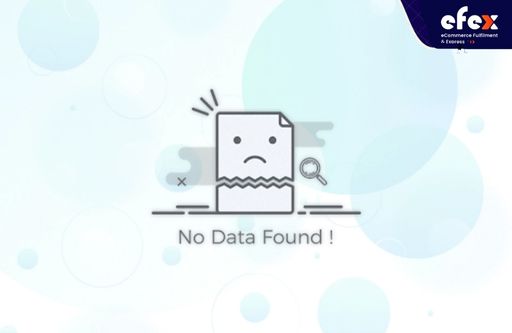
As a business owner, setting prices for your company's goods and services is probably one of the most challenging and data-intensive choices you'll likely make. It may be difficult to strike a balance between pricing that is strong enough to maintain a sustainable profit margin and reasonable enough to draw people in. That's why a large number of companies choose the activity-based costing ( or ABC) technique.
With our straightforward guide below, you can learn more about ABC pricing and get an insight into the disadvantages and advantages of activity-based costing.

The application of activity-based costing has several benefits, including the following main 6 advantages:
More precise production costs are provided to managers through activity-based costing. Businesses may be able to develop more affordable manufacturing techniques or make better selections about what things to create as a result of this. It might be beneficial when figuring out how much to charge for specific things. Activity-based costing makes it simple to collect the data and provides greater knowledge of the production expenses.
👉 Read More: Difference Between Traditional Costing And Activity-Based Costing

Once they have gathered the required information, the majority of management personnel can determine the expenses of each operation. Making decisions about the products that affect pricing could also be aided by this.
When employing activity-based costing, you can distribute the amount of money needed in each area rather than giving all goods the same value. Relying on the indirect expenses, certain items could be more expensive to create. This can assist in determining costs that are applicable to many manufacturing product pools, which can increase the value of resources.
Using this technique, managers may value indirect costs and address them just like direct expenses. They can enhance by analyzing the indirect costs of each action. The activity-based costing approach may be used by managers to assess factors including management impact, effective procedures, and the total cost of several departments.
Activity-based costing can aid in increasing profit margins since it takes into consideration indirect expenses or non-manufacturing expenditures that you might not have previously taken into account. Business executives may make critical decisions with the aid of more precise profit margins.
Additionally, it may aid in lowering or shifting manufacturing costs, enabling management to boost profit margins yet further using smart pricing tactics. Once managers use activity-based costing, it is simple to spot items that are of low to no value. These details may be used to reduce inventory and direct manufacturing efforts toward more lucrative products.

Additionally, it makes it simpler to spot goods that may be wasteful in terms of the resources they require. Some items could be both low quality and resource-intensive.
As a company, you may have noticed that some products or services have greater real prices than others. Maybe a decent, sizable profit from the cost constitutes it. If not, you might be able to increase the pricing or cut back on some operations or cost drivers. Without the activities required to provide them, some products or services cannot function to their full potential and quality.
You may raise the price, yet if you do, there's a delicate line between profit and losing clients. You should occasionally think about deleting an expensive product from your lineup if it exists.
In some businesses, like the service sector, conventional costing techniques don't always yield the desired results. This is so because the service sector has low direct expenses. Nevertheless, since you apply the price directly to the service type you can employ activity-based costing in such sectors. This implies that you may utilize it to enhance outcomes and costs in sectors that would otherwise be ignored.
When selecting the best approach, it's crucial to take into account any potential downsides of activity-based costing. Consider the following potential drawbacks:
The method of activity-based costing could take more time. Team members must manually calculate the expenses of each product rather than totaling the costs and distributing them across all items. The procedure of grouping items into several pools must be completed.

Companies could have to allocate staff to this particular work, but they might alternatively decide to outsource it. This may be a superior approach because this procedure often calls for a group of management-level workers. Furthermore, the team is typically already experienced with the programs once you assign this process to a team that specializes in activity-based costing.
Data collection for specific items may be expensive and time-consuming. Payroll issues may arise from hiring or delegating members of the team for the job, and you could also need to buy data gathering tools. Outsourcing the procedure is a decision made by certain firms, which might be costly. However, there can be alternatives to assist shorten the procedure for a more successful and economical procedure.
The data you want might not always be accessible based on the manufacturing processes or programs you employ. Utilizing certain software may be necessary to get the data you need.

Additionally, the statistics you use when gathering this kind of data don't necessarily adhere to the conventional rules for accounting standards, which might make tracking issues for certain teams more difficult. The innovative activity-based costing approach and programs may require training for all manufacturers and production employees. Nevertheless, once they do, everyone usually finds the procedure to be simpler. As long as you possess the proper tools and support team, gathering the data you want may be advantageous.
Activity-based costing may not be as effective as other approaches for small businesses with little overhead expenditures. Additionally, they are more inclined to calculate data using market-based prices rather than activity-based costs, which isn't always the case. Activity-based costing is most frequently used in the industrial sector. However, it is also showing promise in other sectors of the economy.
At the cost pooling level, a foundation of cost allocation can be needed for things such as rent, taxes, or building depreciation. Changes to certain other systems, such as how variances are computed, could be necessary. People using this way of cost need to have extensive expertise in the relevant field or a thorough grasp of the goods and procedures. Some claim that putting an ABC system into place is frequently challenging.
👉 Read More: Activity-Based Costing Calculation With Example
👉 Read More: Procurement Process Flow: Effective Flow And Benefit
👉 Read More: Seasonality Index: Formula And Calculation
We’ve already gone through 10 disadvantages and advantages of activity-based costing technique. In a nutshell, in order to design an activity-based pricing system, it is crucial to think about the fact that the objectives should be achieved with the least amount of money and effort. The existing activity-based costing method must provide the proper data at the correct detail level in order to be successful.
Additionally, the system's design should be as straightforward as is practical without being overly simple, as if it is, it might indicate erroneous prices. The solution is to create a balance between ease of use and challenge. Performance calculations should also be acknowledged for important actions and at the process level. Hope you have a good time with Efex.
